✨You Can Touch the Times Square New Year's Eve Ball!
Find out how you can take home a piece of the old New Year's Eve ball!



New York City has a handful of observation decks, and a plethora of rooftop bars, but many New Yorkers are unfamiliar with the handful of buildings and structures that can be climbed to experience unique views of the City. These historic vantage points have become fewer and fewer as security and privatization have trumped public access. Despite their limited access, sometimes only once a year at most, it is well worth planning ahead to take in these historic vistas.
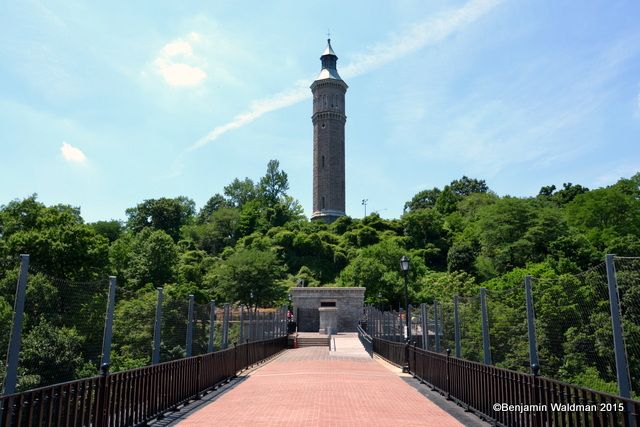
Completed in 1872, the Highbridge Water Tower was constructed as part of the Old Croton Water Aqueduct System. The granite tower was designed by Roach & Jenkins and was constructed in order to create the necessary pressure to provide the higher elevations of upper Manhattan with water from the reservoir. At full capacity, it contained over 47,000-gallons of water.
The tower was decommissioned in 1949 and a carillon was added in 1958, as a memorial to B. Altman the department store owner and art collector, though it has since been removed. It is currently being restored again with an anticipated completion date of March 2016. Once complete, make sure to keep an eye out for opportunities to climb the impressive iron staircase decorated with quatrefoils and other designs in this historic tower.
Check out our recent coverage of the High Bridge.

The Jefferson Market Branch of the New York Public Library is one of the most spectacular branch libraries in New York City. The library was constructed in 1877 as the Third Judicial District Courthouse with an adjoining jail, designed by Frederick Clark Withers and Calvert Vaux in the Victorian Gothic style. Its name was derived from the market originally located on the site which was named after Thomas Jefferson in the early 1830s.
By 1945, Jefferson Market, no longer serving as a courthouse and the building was utilized by various City agencies including the New York City Police Academy, which supposedly used it for riot training. In 1961, Mayor Robert F. Wagner announced that the building would be preserved by converting it into a branch of the New York Public Library. The library opened in 1967 after a two year conversion and restoration process. The library has incredible stained glass windows and has been featured in films including They Might Be Giants. The library’s tower is often open to the public as part of the Open House New York events and for Untapped Cities Insiders tours.
Check out more photos from our climb up the library’s tower.
Check out 14 other former prisons in New York City.
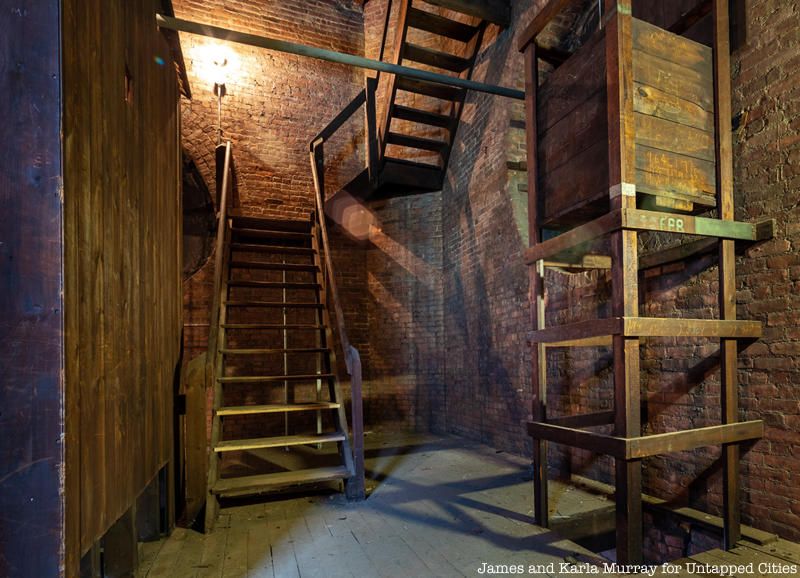
The Fifth Avenue Presbyterian Church dates back to 1808 when the congregation, then known as The Presbyterian Church in Cedar Street, began on Cedar Street. In 1875, the congregation which established one of the City’s first public schools, moved to its present location at Fifth Avenue and 55th Street. The church was designed by Carl Pfeiffer, who was chosen over more established architects including George B. Post.
The exterior of the church was designed in the Gothic style while the interior was designed in accordance with Reformed Protestant precepts and contains no right angles. Occasionally, including for OHNY, the 286-foot high steeple is open to the public. According to the church, it was the tallest building in Manhattan when it was dedicated in 1875. Visitors to the tower can see the its original clockworks, which are still wound by hand once a week. One interesting fact about the tower is that is has never possessed any bells or chimes because “when the church was built, St. Luke’s Hospital was housed in what is now the Hotel Peninsula, and there was a concern that church bells might disturb the patients.”
 Photo by Bhushan Mondkar for Untapped Cities
Photo by Bhushan Mondkar for Untapped Cities
The Cathedral of Saint John the Divine, the largest cathedral in the world, is an incomplete masterpiece. A Guide to the Cathedral from 1921 posited that it might take 700 years for the Cathedral to be completed, since it was employing true Gothic building methods. Heins and LeFarge won the original design competition for the church, with a Romanesque and Byzantine cruciform structure surmounted by a towering conical spire. Until their spire could be completed a temporary dome constructed of Guastavino tiles was put in place. This “temporary” ceiling has been in place for over a century.
Construction of the Cathedral continued through the First World War and the Depression but proved no match for WWII. For 32 years, no construction occurred. These days, restoration work has been ongoing, though no new construction has occurred in years. The Church offers a variety of tours, including vertical tours that allows participants to see the church’s stained glass windows, the interior superstructure of the church, and take in the view on the roof.
Check out 10 other secrets of the Cathedral of Saint John the Divine.
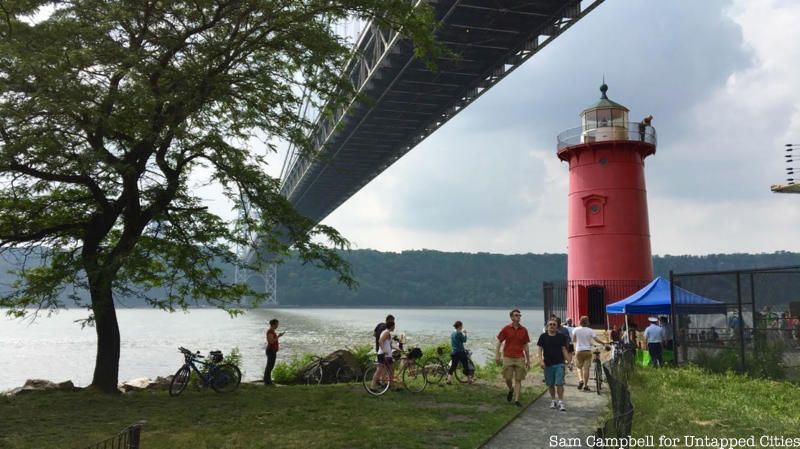
Although the Little Red Lighthouse has a prime spot beneath the George Washington Bridge, this isn’t its original home. The North Hook Beacon was constructed in 1889 and served Sandy Hook, New Jersey. It stood there until 1917 when it was reconstructed on Jeffrey’s Hook four years later. It maintained an active lighthouse until 1947, by which time it was deemed obsolete due to the illumination from the George Washington Bridge.
In 1951, the lighthouse was slated for demolition to be sold as scrap. An outcry of public support, which is said to have been the direct result of the 1942 children’s book, The Little Red Lighthouse and the Great Gray Bridge, saved the lighthouse. The lighthouse was transferred to the New York City Parks Department and is now a member of the Historic House Trust. A handful of times a year, the lighthouse is open to the public.
Check out 8 other historic buildings that have been relocated in New York City.
Read more about NYC sights where children’s books come alive.
Our previous coverage of NYC’s other lighthouses.

Since 1886, the Statue of Liberty has been standing sentry in New York Harbor, welcoming immigrants and tourists alike to America’s shores. The Statue of Liberty was designed by sculptor Frédéric Auguste Bartholdi, with assistance from Gustav Eiffel, who provided the engineering. Even before its dedication, New Yorkers have been taking advantage of the opportunity to climb this modern day Colossus of Rhodes.
In 1876, at the Centennial Expo, in Philadelphia, visitors were first able to purchase tickets to climb a ladder up Lady Liberty’s arm to her torch. After departing the fair, between 1876 and 1882, the arm and torch were located in Madison Square Park, where visitors paid 50 cents to climb up to the torch. This was utilized as an advertising ploy by Bartholdi to help acquire funds for the statue’s base.
Until 1916, visitors to Bedloe’s (now Liberty) Island were able to climb up to the statue’s torch and crown. This changed on July 30, 1916 when Germany spies set off an explosion causing at a munitions facility that was so powerful its shock waves damaged the statue and made the torch unstable. After the explosion, the torch was closed off to visitors. Today, visitors can still enjoy views of the harbor by climbing up the spiral staircase, marveling at Eiffel’s structural work, up to the Statue of Liberty’s crown.
Discover 10 fun facts about the Statue of Liberty’s Torch and the Top 10 Secrets of the Statue of Liberty.
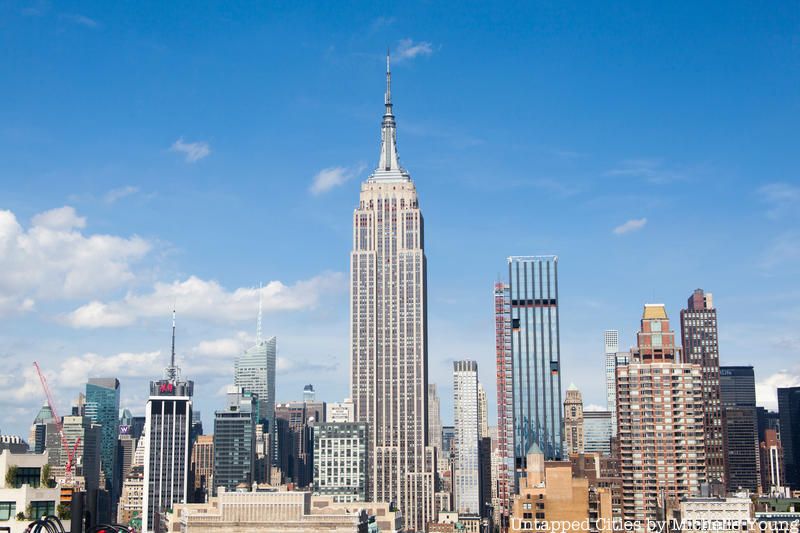
The Empire State Building is one of New York City’s most iconic buildings. The Art Deco masterpiece was constructed in a record twelve months and 45 days, at which point it became the tallest building in the world. It was officially opened by President Herbert Hoover pressing a button in Washington D.C. Despite all of the publicity it received, it took years to find tenants for the building and as a result, became known as the Empty State Building.
Visitors from King Kong to Frank Sinatra to Meg Ryan have enjoyed the views from the 86th and 102nd Floor Observatories, which are accessed via elevators. Once a year, the Empire State Building hosts its Run-Up event where athletes from around the world race up the building’s 1,576 steps. Paul Crake of Australia currently hold the record for completing this feat in 9 minutes 33 seconds.
Check out 10 other Secrets of the Empire State Building
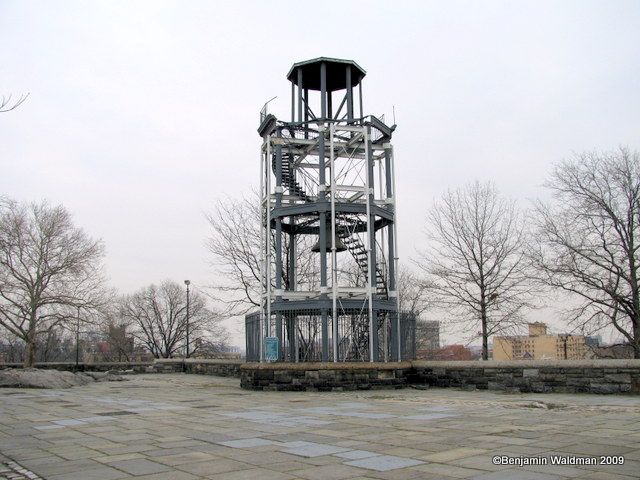
The Harlem Fire Watchtower was constructed between 1855 and 1857 and until recently, was the only remaining fire watchtower in New York City. The aging watchtower, and its 10,000 pound bell, was dismantled from its perch above the heights of Marcus Garvey Park (formerly Mount Morris Park). Over four million dollars has been allocated for the restoration, which is expected to be completed in 2017. We can only hope that once its renovated New Yorkers will be able to ascend to the top of the City’s last remaining Fire Watchtower.
Next, check out 20 abandoned places in NYC for some less than legal exploration.
Subscribe to our newsletter